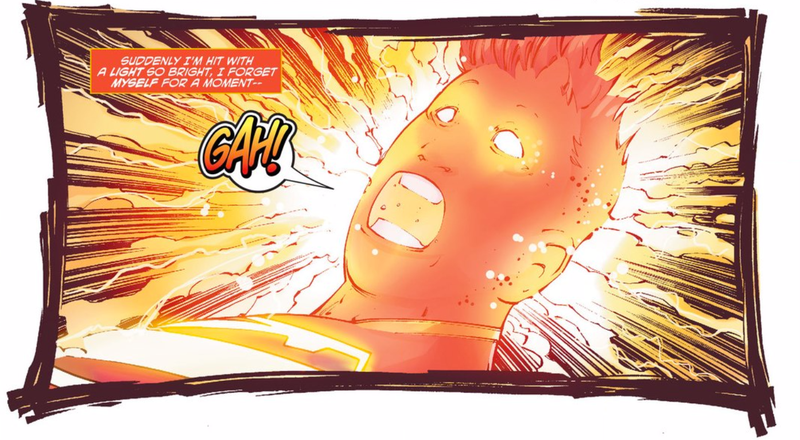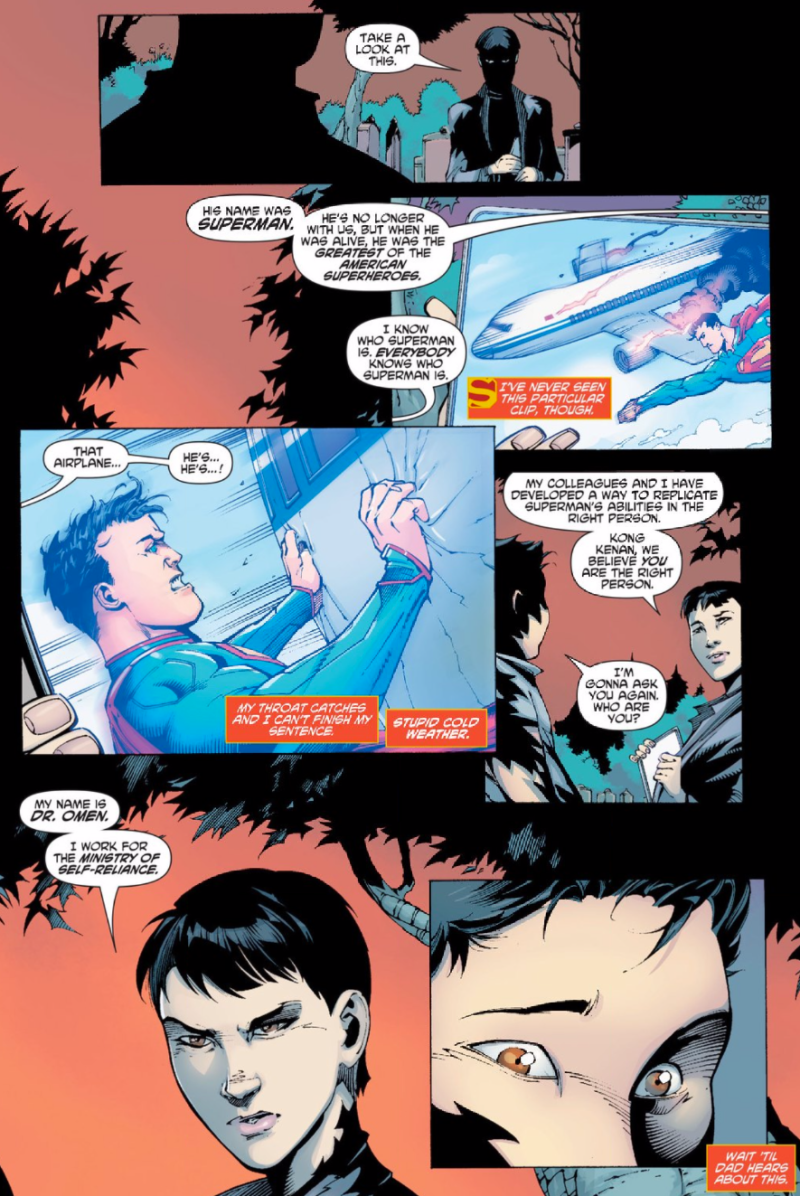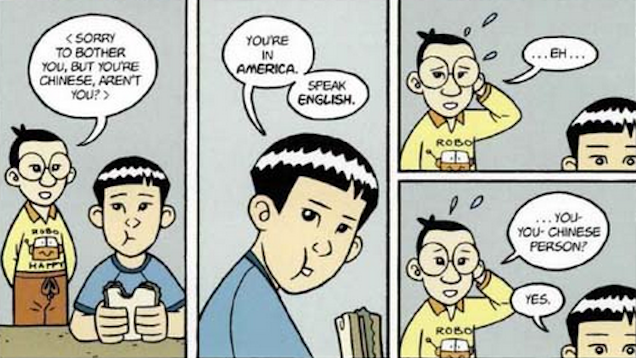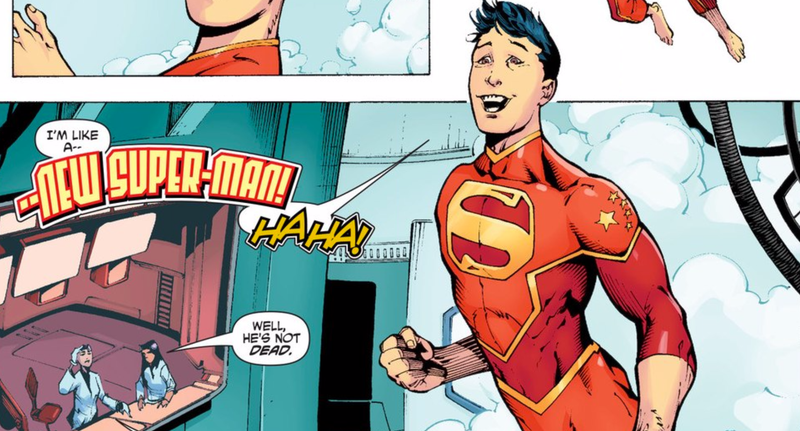 DC Comics’ New Super-Man is a Jerk, but Gene Yang is Trying to Fix That
DC Comics’ New Super-Man is a Jerk, but Gene Yang is Trying to Fix That
SPOILER WARNING: This article contains major spoilers for “New Super-Man” #3, available now.
Kenan Kong – the headlining superhero of DC Comics‘ “New Super-Man” – is completely self-absorbed, power hungry and basically a jerk. What’s not to love?
Well, lots, to be honest. But writer Gene Luen Yang tells CBR that Kenan’s super-heroic journey will be one of self-discovery and enlightenment, as well as an exploration of the old and the new – the yin and the yang – of Chinese culture. That may seem a bit superheavy for a mainstream superhero comic, but Yang, who won an Eisner Award in 2007 for his epic graphic novel “American Born Chinese,” is a modern master of delivering action and drama with an emphasis on personal growth and identity.
Yang also shared in-depth analysis of how Kenan’s humble beginnings as a superhero echo the path of Clark Kent as he was portrayed by Jerry Siegel Joe Shuster in the 1930s and 1940s and why the hyphen in his alter ego’s name, ‘New Super-Man,’ was so important to him, DC Entertainment President & Chief Creative Officer Geoff Johns and DC Entertainment Co-Publisher Jim Lee.
With new fantastic foes, illustrated by Viktor Bogdanovic, appearing in every issue, Yang also discussed the role of the Grant Morrison’s Great Ten in “New Super-Man” as well as the Freedom Fighters of China, themselves analogs of Will Eisner’s classic DC Comics creations.
CBR: Is Kenan Kong really more important that Yao Ming?
[Laughs] In his own mind, he is. I would say that the broader world knows that he is not, but in his own mind, he definitely is.
Don’t tell my wife this, but my oldest son is named Clark because, in my mind, Clark Kent basically personifies all that is right with humanity. The same can’t be said for Kenan. Why did you make him, to use Bat-Man and Wonder-Woman of China’s words, a ‘dummy’ that thinks he’s more important than Yao Ming?

The book is about how a young man gets Superman’s powers and how that transforms him physically and also morally. The moral paragon that is Clark Kent is sort of the destination of Kenan Kong. What we are going to be seeing, as the book progresses, is that he eventually gets there.
I have two different inspirations for the selfishness of Kenan Kong. One of them is actually Clark Kent. If you read early, early issues of “Superman” from the late 1930s/early 1940s when he first comes on the scene, he’s kind of a jerk. He’s kind of a ****. [Laughs] He thinks of himself as better than other people. He really likes to beat people up and then sermonize at them. There is one issue where he takes a slumlord and leaves him on a desert island to starve to death. And that’s it. That’s the end. He never goes back for him. That’s what Kenan Kong is like at the beginning.
The second inspiration is a very, very influential Chinese novel called “Journey to the West,” which was written in the 1500s. The main character is the Monkey King. I don’t know if you have heard of him, but in China, he is a big deal. In the beginning of “Journey to the West,” he is also a jerk. He only thinks about himself. He thinks about power. He thinks about getting glory for himself and the whole book is about how he attains spiritual enlightenment, how he becomes a selfless person. As an Asian American, I like seeing resonance between Western and Eastern stories, and there is resonance when you look at the stories with Clark Kent from the 1940s and the Monkey King. That’s kind of what I wanted to reflect in “New Super-Man.”
What do you think a Chinese Superman means to people in China, and Asian Americans? Is “New Super-Man” even available in China?
I don’t know if the book is officially available in China but I have had some Twitter feedback from some people who I think are in China, but you never know with Twitter. [Laughs] It could be some German dude pretending he’s from China.
But honestly, pretty much all of the feedback that I have received has been pretty positive, from both Asian Americans and Chinese readers. I haven’t had a ton from Chinese readers, but from Asian Americans, a lot of them seem to really like the book.
I have a nerdy, grammatical punctuation question for you. Why is ‘Super-Man’ hyphenated in “New Super-Man”?
[Laughs] This is what I gather, because I actually didn’t come up with the hyphen — Geoff Johns liked it. Again, when Superman first came on the scene, the hyphen was there., and Batman had the hyphen, too, and then eventually, the hyphens disappeared. I do like the hyphens, and Geoff wanted to bring them back. Jim Lee wanted an Asian hero within the Superman family, and those two things came together.
I think the hyphen has a very interesting place with Chinese American history. There are actually two major ways of Romanizing Chinese names, and the one that used to be popular is called Wade–Giles. Whenever you took a Chinese word or a Chinese phrase and you brought it into English, you would just have hyphens all over the place. For a real long time, hyphens were just associated with Chinese words written in English.
Now, the more popular way to do it is called pinyin, and that got rid of the hyphen. It’s almost like they were ashamed of the hyphen. I think it’s kind of interesting to have hyphens in book about a Chinese superhero just because, like you said — this is super nerdy — but because of the strange and colorful history of hyphens within English Romanization. I think it’s kind of fun to have it in there.
So I guess Mingming is an example of pinyin. Man, this has turned into grammar lesson! [Laughs].

Yes. That’s actually the name of someone that I knew when I was growing up, and I like it. But yes, in Wade–Giles, it would be capital M ‘Ming’ and then hyphen and then ‘ming.’ And in pinyin, it would be capital M ‘Ming’ and then lower case m ‘ming,’ all one word.
Mingming and her superior, Dr. Omen, work for the Ministry of Self Reliance. While it’s obviously a fictionalized agency, how grounded in reality is it?
The inspiration for the Ministry of Self Reliance is two things. The first is, we wanted a Chinese version of A.R.G.U.S., so it’s definitely rooted more in the DC Universe than it is in actual Chinese politics.
The second thing is that there was this movement in China known as the Self-Strengthening Movement in the late 1800s, when China was really losing a lot of power to Western influences, and this was their response to the West. This is how they responded to Western power, with this movement of self-reliance. In a lot of ways, the Ministry of Self Reliance is the China of the DCU’s response to DCU’s superpowers in the West.
In “New Super-Man” #3, Dr. Omen confronts August General in Iron and openly mocks the Great Ten, saying China has passed them by — they just haven’t realized it yet, and that’s why New Super-Man and the Justice League of China are needed. Why did you create the Justice League of China as opposed to reimagining the pre-existing Great Ten for DC Rebirth?
I really like the Great Ten, and I think they are really interesting characters – they’re fascinating characters, but there are some problematic elements to some of them. The nuances of the characters maybe outweigh the problematic elements. Maybe. But it was given before we started “New Super-Man” that China already had its own super team, namely the Great Ten.
I read the Great Ten bible that Grant Morrison had written, and a lot of it was rooted in bureaucracy. It’s a funny thing, but whenever the Great Ten needs to do something, they have to fill out all of the paperwork. It’s very much how old school Chinese communism worked, but China is changing at such a rapid pace. The way that the Chinese describe it is trying to feel your path along stone in a river. They’re just trying to feel one stone to the next. What they are right now is some kind of weird hybrid between old school Chinese communism and something much more modern.
Within the “New Super-Man” story, the Great Ten represent the old way of doing things – the more standard, Chinese communist government way of doing things. The Ministry of Self Reliance and the Justice League of China represent this hybrid model that I think China is in the midst of figuring out.
In keeping with the exploration of the old versus the new, we also have a really interesting relationship unfolding between Kenan and his father, who, as we have learned, is far more than a simple mechanic.
That’s really the central relationship of the first arc – Kenan and his dad. They really represent the yin and yang of a moral tension. Some people love humans more than humanity, and other people love humanity more than humans. Meaning some people are able to love the concrete people around them, but they could care less about wider society, and other people have and are devoted to a lot of ideals about society, but they have a hard time loving the people who are actually concrete around them.









 Reply With Quote
Reply With Quote



